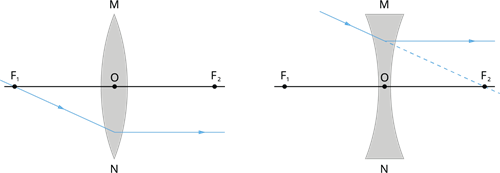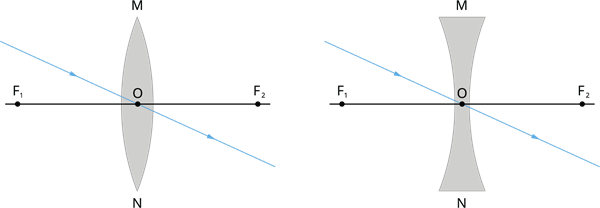
PUMPA - SMART LEARNING
எங்கள் ஆசிரியர்களுடன் 1-ஆன்-1 ஆலோசனை நேரத்தைப் பெறுங்கள். டாப்பர் ஆவதற்கு நாங்கள் பயிற்சி அளிப்போம்
Book Free DemoUsing ray diagrams, we can represent image formation by lenses. The nature, position, and relative size of the image formed by lenses can also be studied using ray diagrams. We use any two of the following rays to draw ray diagrams in lenses like spherical mirrors.
The ray diagrams for the image formation in a convex and concave lens for a few positions of the object are shown below.
Rule 1:
A ray of light from the object, parallel to the principal axis, after refraction from a convex lens, passes through the principal focus on the other side of the lens.
In the case of a concave lens, the ray appears to diverge from the principal focus located on the same side of the lens, as shown in the below figure.

Ray of light passing parallel to principal axis
Rule 2:
A ray of light passing through a principal focus, after refraction from a convex lens, will emerge parallel to the principal axis.
A ray of light appearing to meet at the principal focus of a concave lens, after refraction, will emerge parallel to the principal axis.

Ray of light passing through principal focus
Rule 3:
A ray of light passing through the optical centre of a lens will emerge without any deviation.

Ray of light passing through optical centre